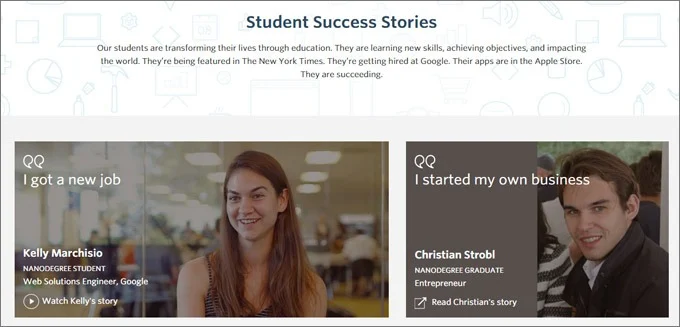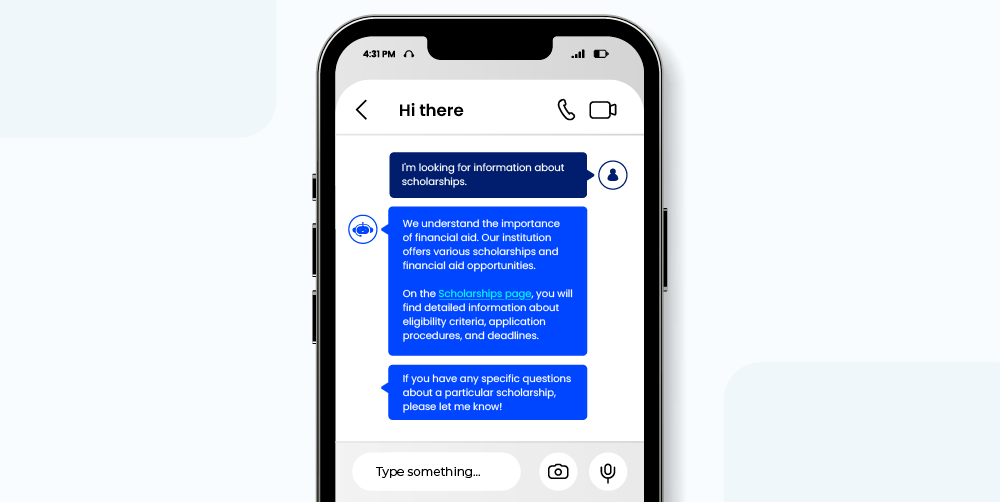Student retention in higher education is a major challenge. Recent data from an international review states that dropout rates in higher education are increasing by 30% on average, impacting almost all universities worldwide. Losing a student impacts institutions twice—first through the immediate loss of tuition revenue, and again through diminished long-term outcomes such as reduced alum networks, lower graduation rates, and weaker institutional reputation.
To address this, institutions must focus on identifying students who need help early and providing the right support at the right time. The following sections explore how successful institutions approach this challenge and invest in strong student retention strategies.
What is student retention in higher education?
Understanding how to improve student retention in higher education starts with understanding what student retention is. Student retention in higher education refers to an institution’s ability to keep students enrolled and progressing successfully toward degree completion over time. It’s typically measured by tracking whether students continue from one academic period to the next—such as one semester to the next, or the first year to the second—and by monitoring their consistent progress toward graduation.
Retention is a critical metric because it reflects not only institutional effectiveness in supporting students academically, socially, and financially, but also impacts student outcomes—as those who drop out often face significant debt without the increased earning power that comes with a degree.
- When retention rates are high, it’s a sign that students feel supported, connected, and satisfied.
- When they drop, it’s often a warning that students are struggling—with finances, academics, or belonging—and that institutions need to step in with stronger support systems.
Losing students is a bad thing all around. The students you don’t retain don’t graduate from your college, or often, any college.
Factors influencing student retention in higher education are complex. Usually, a combination of factors triggers the student’s decision to leave college. The reasons may include:
- Personal difficulties
This is the most common explanation, and it relates to health, finances, family, work, and difficulty fitting in or making friends.
- Academic difficulties
Challenges here include a lack of academic preparedness and weak academic knowledge or study skills. Weak academic entry scores and low GPAs in the first semester are associated with greater attrition.
- Full-time vs. part-time status
Part-time students are significantly less likely to continue into second year compared to full-time students.
- Perceived wrong academic choice
Some students feel they’ve chosen the wrong program or institution. This perception often stems from unmet expectations about course content, teaching style, or career outcomes.
- Loss of interest
Others begin with enthusiasm but gradually lose motivation or engagement. This can happen when the coursework feels irrelevant, too difficult, or disconnected from their goals.
- Overwhelming course demands
The student is unable to manage the time and workload demands.
Seeing these challenges, it’s clear that you need effective strategies to keep students engaged. Here are some proven methods to help improve student retention.
14 Student retention strategies for higher education
Institutions need to implement strategies and best practices that enhance the student experience at every stage—from initial enrollment to graduation.
Student engagement plays a vital role in enhancing the academic experience and strengthening the university–student relationship. Because student retention and engagement in higher education are closely connected, we’ve compiled 14 practical strategies to help institutions improve student persistence and success.
1. Define success for students
Student success can mean different things to different people. For some, it’s about grades; for others, it’s about growth, confidence, or future opportunities. Define what success looks like at your institution, and make sure both students and staff understand it. When everyone shares a common vision—and respects each student’s personal goals—you create an environment where motivation and purpose thrive.
2. Help students track their progress
Interactive tools such as to-do lists, goal-tracking dashboards, and co-curricular pathways can help students stay engaged and focused on their academic and personal goals. These tools promote intentional engagement by clearly outlining the steps to earn credits, complete certifications, and track progress toward milestones.
Mapping out milestones is a highly effective way to encourage students to graduate, according to Hanover Research. The research offers examples of measurable milestones including:
- Earn one-year of college-level credits
- Complete general education coursework
- Transfer from community college to a four-year institution
- Complete needed remediation
3. Foster student autonomy
Empowering students to take charge of their own learning journey is a crucial driver for both retention and personal growth. By nurturing autonomy, institutions help students build the intrinsic motivation they need to persist—even when the going gets tough.
So, what does fostering autonomy look like in practice?
- Create clear pathways for goal-setting. Invite students to set ambitious yet attainable goals using frameworks like SMART goals. Guide them to break large aspirations into smaller, manageable steps, and celebrate their achievements along the way. Offering workshops or structured tracks—think “success blueprints”—can provide helpful scaffolding without removing ownership.
- Promote a culture of asking for help. Often, students hesitate to reach out—even when support could make all the difference. Normalize help-seeking by elevating mentorship or peer-connection programs and highlighting real stories of students who benefited from reaching out. Making support networks visible and approachable signals that autonomy includes knowing when to seek guidance.
- Encourage student-driven sharing. Give students a platform to share their wins, setbacks, and strategies. Whether through an online community board or student spotlights, amplifying peer voices helps others see that challenges—academic or personal—are a shared experience.

Ultimately, giving students the tools and encouragement to navigate their own academic journey not only boosts their confidence and resilience but actively supports their long-term engagement and success.
4. Engage with your students regularly
Too often, students don’t reach out for help—with academic or social needs—because they don’t know how. Guidance and support from a professor or advisor can go a long way toward helping students work through their challenges and stay on-course. Improving student retention in higher education requires consistent connection.
Here are some tips to stay connected with your students:
- Connect early and often with programs to help students build relationships with the staff, faculty, and advisors as well as peers and student leaders.
- Design effective orientation programs and consider easily accessible virtual components or program options. An on-boarding or “getting started” checklist may be a good complement to your orientation program.
- Take advantage of opportunities to help students learn about campus services and the community.
- Implement an academic success program to support at-risk students with “success” courses, study sessions to promote achievement, and academic coaching.
- Offer students mentoring programs to develop important life skills. Many students may not know how—or where—to reach out for help with academic or social needs, which can leave them feeling isolated. Providing mentoring opportunities allows students to learn essential skills, build relationships with faculty and advisors, and understand exactly how to ask questions or seek assistance when they need it. A strong mentoring program can be the difference between a student navigating challenges with confidence or feeling lost and unsupported.
- Offer technology that makes it easy to connect and book meetings with advisors, faculty, and staff.
- Use communication tools to check-in and follow-up with students in need and track the engagement metrics.
5. Build community
Don’t assume students will find their path on their own. Aim to cultivate a sense of belonging with programs to build community in and out of the classroom. Students who feel supported are more likely to perform well in school.
In the post-pandemic world, students often struggle to juggle between online and in-classroom experiences. Many struggle to work in group projects or don’t have a sense of belonging.
Commit to developing supportive programs and communications specifically focused on increasing a sense of belonging. Consider establishing a network of peer mentors to engage with first year students.

6. Encourage students to get involved
It’s important to help enrich the overall student experience by connecting them with opportunities to get involved outside the classroom. Consider conducting involvement fairs (virtual or in-person) for students to visit, ask questions and learn more about organizations with positive experiences to offer beyond their studies.
7. Accommodate the challenges non-traditional students face
If you’re still wondering how to increase student retention in higher education, know that it often means adapting to diverse student needs.
Many students have work and family responsibilities. Non-traditional and commuting students face unique challenges. A student who drives to campus for classes and then heads straight home may not feel that campus life is relevant or accessible—but with intentional outreach and flexible involvement opportunities, these students can participate meaningfully. By connecting them to activities that fit their schedules, you empower them to build their co-curricular transcript, develop transferable skills, and take on leadership roles, just like their peers in traditional programs.
Make sure your student engagement programming is accessible to all—whether through hybrid events, online student groups, or options that meet outside of typical business hours—so every student, regardless of circumstance, can unlock their full potential.
- Wherever possible, offer flexible schedules such as recorded lectures and weekend and evening classes.
- Online courses can increase retention. Offering digital courses improves outcomes by helping students earn their degree faster. Additionally, online classes offer disadvantaged students greater access to education. Tailor your online portfolio to the specific needs of your student population.
- Offer affordable child-care options for students who are parents.
- Implement easily accessible virtual student life programs and groups that accommodate non-traditional students.
8. Support retention with financial resources and job opportunities
Access to financial resources is a game-changer when it comes to keeping students enrolled and thriving. Many students face the daunting challenge of managing school while juggling work and family obligations, and financial pressures can quickly become overwhelming. That’s why it’s essential to proactively connect students with meaningful avenues to support themselves. You could even use an AI chatbot to do this.
- Promote on-campus and local job opportunities through a centralized job board, making it simple for students to search for positions, apply, and even schedule interviews.
- Share information about scholarships, grants, and bursaries widely—including deadlines, eligibility, and application tips—so students don’t miss out on available support.
- Collaborate with external organizations like the YMCA, local government programs, or community nonprofits that offer internships, financial literacy workshops, or emergency grants.
- Develop flexible payment plans for tuition and expenses that allow students and their families to manage costs more effectively.

By helping students access employment and financial assistance, you’re not just alleviating immediate stress—you’re empowering them to stay focused on their academic goals, engage more fully on campus, and ultimately, persist through to graduation.
9. Communicate with parents
For younger, traditional students, keeping parents or guardians informed about academic progress and available support services—such as counseling, tutoring, and academic advising—can strengthen outcomes. In the case of adult or non-traditional learners, similar communication should focus directly on the student, ensuring they’re aware of and able to access these resources. When intervention is needed, virtual meetings can help align everyone involved.
10. Gather student feedback
One of the best ways to prevent students from leaving school is by regularly collecting feedback to gauge student happiness and program effectiveness. Use surveys to get to know your students, how they feel, what struggles they’re experiencing, what they like, and more. Feedback sourced directly from students will deliver the insights you need to address issues quickly and optimize your programs.
According to a Student Satisfaction report by Studyportals, measuring student satisfaction:
- Helps colleges identify which areas exceed expectations and can be highlighted to promote the institution, and which areas require improvement.
- Enables colleges to understand their ability to achieve students’ well-being and keep them motivated and engaged.
- Allows colleges to align their retention strategy with their stated mission and objectives.
11. Measure student retention KPIs
Identify, measure, and track student retention KPIs and distribute the data to members of the leadership team, so they know how different programs are performing.
Additionally, you should collect both quantitative data (such as GPA, attendance rates, and credit completion) and qualitative data (such as students’ goals, motivations, and perceived obstacles) to build predictive models for student success. This data can help inform proactive retention strategies.
Of course, you won’t get far unless you have dependable data collection and analytic components in place. Spreadsheets won’t do. You need a higher education CRM, like LeadSquared, that can integrate with your existing systems like SIS to create an efficient way to share student information across departments.

12. Track high-risk students
Use engagement analytics regularly to spot early signs that students are struggling, or might drop out. Notify staff so they can reach out and help.
13. Set up early interventions
Develop an ongoing assessment and intervention plan to equip at-risk students with increased support and services ASAP. When students appear to be experiencing academic, personal, financial, or social issues, inform them about the resources you offer that can help them address their needs.
14. Encourage discussion forums
Regularly reaching out to students as well as providing them with access to counsellors is equally crucial. From admission to graduation, it is important for students to have complete visibility into their interactions with counsellors, advisors, and professors. This helps the institute gain valuable insights into the student’s retention journey.
Wrapping up
To strengthen student success—which is closely linked to retention—institutions should marshal their resources, secure commitment from leaders and stakeholders, embrace innovation, continuously measure and evaluate progress, and base decisions on solid evidence. Together, these actions represent the best practices for student retention in higher education.
A robust student retention program can improve the quality of your college and reduce college attrition rates. Your student retention strategies in higher education should be reviewed regularly by all relevant constituents and refined as needed.
Meaningful progress on student success will not happen overnight. Institutions should foster the culture, skill sets, and infrastructure necessary to support a student-focused environment. As the magnitude of the challenge grows, institutions that start down this path sooner, rather than later, are most likely to see significant results.
Deloitte Insights
Source: Success By Design—Improving Outcomes in American Higher Education
LeadSquared’s Higher Education CRM empowers institutions to boost student retention by providing real-time insights into engagement, academic progress, and risk indicators. With automated alerts, personalized communication, and data-driven workflows, staff can proactively support students before challenges escalate. Discover how you can strengthen retention and student success.
See LeadSquared in action!
Frequently Asked Questions (FAQs)
What is the retention rate for higher education students?
The retention rate for higher education students varies significantly by institution type and student demographics.
On average, four-year institutions see first-year retention rates around 75-80%, while two-year community colleges typically have lower rates, often between 50-60%. Part-time students have notably lower retention rates compared to full-time students. Private institutions generally report higher retention rates than public ones.
These numbers highlight the critical need for robust retention strategies, and tools like LeadSquared can help institutions track their specific retention metrics, identify trends, and implement data-driven interventions to improve these rates over time
What is student retention rate meaning?
Student retention rate refers to the percentage of students who continue their enrolment at an educational institution from one academic period to the next, typically measured from the first year to the second year. It’s a key performance indicator that reflects how well an institution supports and engages its students. A high retention rate indicates that students are satisfied, academically successful, and committed to completing their degree, while a low retention rate signals potential issues with student support, academic quality, or campus experience that need to be addressed.
What is the biggest issue facing higher education today?
The biggest issue facing higher education today is student retention and completion rates, compounded by rising costs and increasing student debt. Many students drop out without completing their degrees, leaving them with debt but without the earning power that comes with a degree.
This problem is exacerbated by factors like inadequate academic preparation, financial pressures, mental health challenges, lack of engagement and belonging, and difficulty balancing work, family, and school responsibilities. Addressing retention requires comprehensive institutional commitment to student success, innovative support programs, and technology solutions like LeadSquared that enable institutions to identify at-risk students early and intervene effectively.
What is the greatest challenge for the college students of today?
The greatest challenge for college students of today is managing multiple competing demands while maintaining their mental health and academic performance. Today’s students—especially non-traditional and commuting students—often juggle full-time or part-time work, family responsibilities, financial pressures, and coursework simultaneously. The post-pandemic landscape has added complexity with hybrid learning environments, social isolation, and difficulty building meaningful connections on campus.
Students struggle with time management, feeling overwhelmed by workload demands, and not knowing how or where to seek help. Addressing this requires institutions to offer flexible programming, accessible support services, clear communication channels, and proactive outreach to ensure no student falls through the cracks.
How can institutions effectively track and improve student retention in higher education?
Institutions can effectively track and improve student retention by implementing comprehensive data collection and analytics systems that monitor student engagement, academic performance, and risk factors. Identify and measure retention KPIs including first-year retention rates, credit completion rates, and progression toward degree milestones. Use both quantitative data (grades, attendance, course completion) and qualitative data (student feedback, satisfaction surveys, goals and motivations) to build predictive models for student success. A higher education CRM like
LeadSquared integrates with existing systems such as Student Information Systems (SIS) to create efficient data sharing across departments, automate alerts for at-risk students, and enable timely interventions. Regular measurement, evaluation, and refinement of retention strategies based on solid evidence are essential for meaningful improvement.








